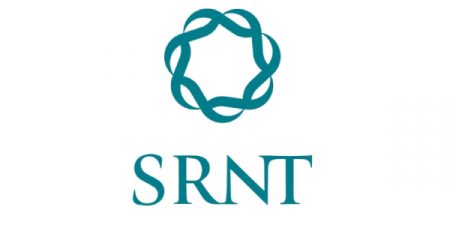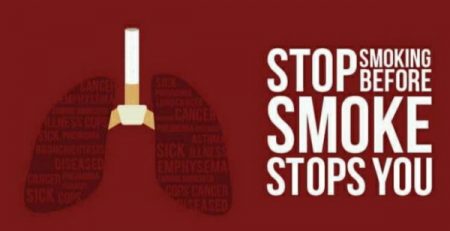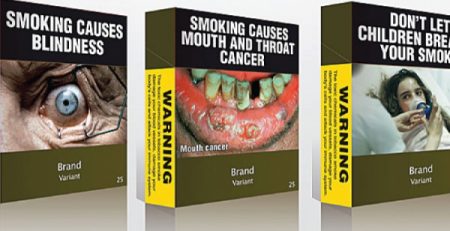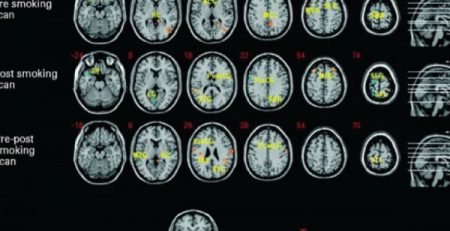Economists often joke that economics is the dismal science based
Economists often joke that economics is the dismal science based on the economist Thomas Malthus claim that humanity was trapped in a world where population growth would always strain natural resources and bring widespread misery. In fact, one could argue it is an apt description because businesses like the tobacco industry ignore ethical responsibilities and become committed to selling products that are damaging and exploitive by promising illusory benefits. The industry is a corporate entity that is driven by its responsibility to its shareholders to maximize profits. Economics is the central concern of the industry. This raises the question, “Why hasn’t tobacco control used economic principles to drive the tobacco industry into extinction?” The answer is more complex than the question, and this monograph explains part of the reason for past limited economic measures against the tobacco industry.
This commentary seeks to discuss some of the most important factors that are involved in economic action against the tobacco industry.
Nine broad conclusions that emerge from this monograph include:
- The global health and economic burden of tobacco use is enormous and is increasingly borne by low- and middle-income countries.
- Failures in the markets for tobacco products provide an economic rationale for governments to intervene in these markets.
- Effective policy and programmatic interventions are available to reduce the demand for tobacco products and the death, disease, and economic costs that result from their use, but these interventions are underutilized.
- Policies and programs that work to reduce the demand for tobacco products are highly cost-effective.
- Control of illicit trade in tobacco products, now the subject of its own international treaty, is the key supply-side policy to reduce tobacco use and its health and economic consequences.
- The market power of tobacco companies has increased in recent years, creating new challenges for tobacco control efforts.
- Tobacco control does not harm economies.
- Tobacco control reduces the disproportionate burden that tobacco use imposes on the poor.
- Progress is now being made in controlling the global tobacco epidemic, but concerted efforts will be required to ensure that progress is maintained or accelerated.
This commentary deals with only three of these conclusions:
- The global health and economic burden of tobacco use is enormous and is increasingly borne by low- and middle-income countries.
- Effective policy and programmatic interventions are available to reduce the demand for tobacco products and the death, disease, and economic costs that result from their use, but these interventions are underutilized.
- The market power of tobacco companies has increased in recent years, creating new challenges for tobacco control efforts.1
Economic Burden
Over many years, new methods have been developed to estimate the economic burden of tobacco use. Early studies made estimates of diseases for which there were registries such as cancer. By adding the cumulative economic impact of tobacco use on cancer, respiratory disease, and heart disease, various estimates of health care costs were made.2 Later, as it became clear that tobacco had wide ranging impacts on more diseases and for costs in addition to health care costs, indirect costs such as productivity losses were calculated.3 Despite the fact that tobacco-related costs are generally lower in low and middle income countries, about 40% of all tobacco-related costs are borne by these countries. Recent estimates find that smoking costs 1.4 trillion US dollars yearly, almost 2% of annual GDP worldwide.4 Despite this huge burden, policymakers often are unaware of these costs and are lobbied by tobacco interests regarding short term economic gains promised through commerce and trade. While it is true that tobacco companies make big profits, gains flow primarily to Big Tobacco and not to small businesses and governments who suffer from meeting long-term costs. The tobacco industry likes to point out that tobacco taxes are regressive with the burden falling heavily on poorer individuals. However, they do not point out the benefits to the poor when smoking is reduced by higher taxation. Consumer analysis shows that the poor benefit a great deal with long-term and recent cessation associated with lower spending on alcohol, and more household resources available for food at home, transportation and entertainment.5
Interventions Underutilized
Why are economic policies to reduce tobacco use underutilized? There are many reasons for this underutilization, but two of the reasons are lack of comprehensiveness in tobacco control policies and programs, with limited supply-side involvement in overall tobacco policies and lack of attention to dispelling the myths spun by the tobacco industry about the economic consequences of tobacco control.
Lack of comprehensiveness and supply-side policies
Researchers have long recognized that keeping people from using tobacco and getting smokers to quit smoking are both important preventive approaches to reduce harm from tobacco use. Since the approach has used a medical or public health model, it has focused on reducing tobacco demand. Thus, the models do not fully consider the many dimensions of tobacco use that include business models of tobacco production, manufacture, distribution, promotion and sales.
In short, the focus was centered on education and cessation which did not sufficiently address supply-side issues such as product, placement promotion and price. In controlling consumer products, many regulations consider these issues for other products, but for tobacco, product regulation is only a relatively recent field of investigation by tobacco control authorities who have more commonly been health or medical specialists. Although tobacco control has been successful with demand-side efforts, both strong supply and demand policies are needed to comprehensively control any product. Supply-side proposals and policies have become important in tobacco control only recently as authorities have begun to consider ‘end game’ approaches for the almost complete elimination of tobacco use in countries already with low tobacco use. Some policies mentioned as part of interventions in the report include: efforts to stop the illicit trade in tobacco (FCTC protocol), uniform taxation by weight of all tobacco, minimum base pricing, rapid tax increases on tobacco, and harmonized tax rates across jurisdictions. Other supply-side interventions would go beyond regulating tobacco supply to the elimination of the commercial supply completely using various means including licensing tobacco use.
Tobacco Company Power
The big tobacco companies have invested both human and financial resources to dominate control over tobacco governance worldwide in countries with sufficient populations and wealth to be worth their interest. Attention has been focused on less-regulated markets in Asia and Latin America where rising incomes, trade liberalization, and intensive marketing provide circumstances for market expansion. Unfortunately, tobacco companies use many strategies and tactics to reduce or eliminate tobacco tax increases. For example, unless tax increases are passed on to consumers, tax increases have little impact on tobacco consumption. Companies sometimes absorb incremental tax increases so consumers don’t feel the impact of an excise tax increase.6
In addition to their worldwide presence, tobacco companies have invested in research and development to counter tobacco control efforts. Internal tobacco industry documents show that tobacco companies give extensive resources to regulatory affairs that include such areas as international trade and investment laws and treaties. While tobacco control has involved countering such actions, little has been done through litigation and aggressive lobbying for tobacco control as a part of a social justice platform for health as a human right. Thailand is one of the few countries that has challenged the tobacco industry on many fronts including trade, but predictable and sustainable funding is necessary for continued health leadership. Tax policy provides an opportunity to both lower smoking prevalence and provide funding for health needs, especially for underfunded non-communicable disease (NCD) areas. Allocating a portion of taxes on tobacco (and alcohol) can go a long way to sustain tobacco control efforts. In Thailand, this has been done through a special health promotion fund to address unmet NCD needs. Various taxing schemes can be used to achieve this result and it is vitally important that the myths that the tobacco industry has used to manipulate tax policy be exposed. For example, the effectiveness of increased tobacco tax is sometimes challenged based on the erroneous belief that longtime smokers will not respond to tax increases. Recent research shows that substantial tax increases are particularly effective with older smokers.7 This kind of evidence about tobacco taxation should empower tobacco control advocates to take further action to tax tobacco to lower prevalence and boost financial resources for NCD health programs such as tobacco control.
In a November 2016 blog, William Savedoff of the Center for Global Development notes, “…tobacco taxes are unique in their impact on health but still share a lot in common with other taxes. Even without the health benefits, tobacco taxes are part of the fiscal revenue agenda. Raising, simplifying, and improving the administration of tobacco taxes would fulfill international commitments (Framework Convention on Tobacco Control Article 6), increase domestic revenues (Addis Ababa Action Agenda paragraph 32), and modernize public administration (at the World Bank and the IMF). It is time for the major international financial institutions to give higher level attention to tobacco taxes as an important part of both the domestic revenue agenda and the health agenda.”8
At the end of this economics monograph, research priorities are given in six areas:
- Tobacco taxation and pricing
- Economic impact of tobacco use and tobacco control
- Interrelationships between tobacco use and poverty
- Illicit trade
- Economically viable alternatives to tobacco growing and manufacturing
- Surveillance in five broad categories: 1) Tobacco use, 2) Economic costs of tobacco use, 3) Tobacco-related knowledge and beliefs, 4) Financial aspects of tobacco, including tobacco product sales, tax revenues, and the extent of tax avoidance and evasion, 5) Measures related to tobacco control, including resources devoted to tobacco control programs.
This review of research priorities is quite useful since it points to areas of particular challenge for low- and middle-income countries where resources may be limited.
Concluding Comments:
Economist Frank Chaloupka recently distilled the situation for more economic focus and research by stating: “Regulation of tobacco does not have a negative effect on the economy, but it in fact has a positive effect by reducing medical costs, improving productivity and promoting economic development.”9 Though this commentary on the over 600 pages of the new monograph on the economics of tobacco cannot fully provide all the points of importance in this volume, it is hoped that it provides enough information to encourage further investigation into the economic dimensions of tobacco regulation.
Stephen Hamann, TRC Consultant
References
- U.S. National Cancer Institute and World Health Organization. The Economics of Tobacco and Tobacco Control. National Cancer Institute Tobacco Control Monograph 21. NIH Publication No. 16-CA-8029A. Bethesda, MD: U.S. Department of Health and Human Services, National Institutes of Health, National Cancer Institute; and Geneva, CH: World Health Organization; 2016. Available online at: https://www.google.co.th/url?sa=t&rct=j&q=&esrc=s&source=web&cd=1&cad=rja&uact=8&ved=0ahUKEwi37LfmivzSAhUJvrwKHa0WCMIQFggYMAA&url=https%3A%2F%2Fcancercontrol.cancer.gov%2Fbrp%2Ftcrb%2Fmonographs%2F21%2Fdocs%2Fm21_complete.pdf&usg=AFQjCNEptKDcsEyCFfo5uz6wbyoEegNBnw&sig2=wnneOAME1Bl606n-il0Sig&bvm=bv.151325232,d.dGc
- Leartsakulpanitch J1, Nganthavee W, Salole E. The economic burden of smoking-related disease in Thailand: a prevalence-based analysis. J Med Assoc Thai. 2007 Sep; 90(9):1925-9.
- Bundhamcharoen K, Aungkulanon S, Makka N, Shibuya K. Economic burden from smoking-related diseases in Thailand. Tob Control. 2016 Sep;25(5):532-7. doi: 10.1136/tobaccocontrol-2015-052319. Epub 2015 Oct 1.
- Goodchild M, Nargis N, Tursan d’Espaignet E. Global economic cost of smoking-attributable diseases. Tobacco Control. Online First: http://dx.doi.org/10.1136/tobaccocontrol-2016-053305
- Erin S Rogers, Dhaval M Dave, Alexis Pozen, Marianne Fahs, William T Gallo. Tobacco cessation and household spending on non-tobacco goods: results from the US Consumer Expenditure Surveys. Tobacco Control. Online First: http://dx.doi.org/10.1136/tobaccocontrol-2016-053424
- Linegar DJ, van Walbeek C. The effect of excise tax increases on cigarette prices in South Africa. Tobacco Control. March 2017. http://tobaccocontrol.bmj.com/content/early/2017/03/24/tobaccocontrol-2016-053340?papetoc
- Stevens VL, Diver WR, Stoklosa M, Flanders WD, Westmaas JL, Jemal A, Drope JM, Gapstur SM, Jacobs EJ. A Prospective Cohort Study of Cigarette Prices and Smoking Cessation in Older Smokers. Cancer Epidemiology Biomarkers and Prevention. 2017. http://cebp.aacrjournals.org/content/early/2017/03/04/1055-9965.EPI-16-0690
- Savedoff W. Maybe tobacco taxes aren’t so special after all. Global Health Policy Blog, Center for Global Development, November 4, 2016. https://www.cgdev.org/blog/maybe-tobacco-taxes-arent-so-special-after-all
- Yang-joong K, Hankyoreh News. Experts say measures to prevent smoking can also boost the economy. March 28, 2017 at: http://english.hani.co.kr/arti/english_edition/e_national/788348.html
By Stephen Hamann, TRC












